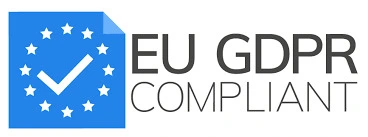Drive-to-Store advertising, a key tool for optimizing the effectiveness of your media strategy
All retailers want their marketing action plans to be as impactful as possible. Achieving that goal requires finding the ideal media mix by combining digital and traditional communication channels. The goal is to understand which channels are best suited to meeting your objectives so you can make the most of your communication budget.
How Drive-to-Store advertising fits within your communication plan
While traditional marketing channels, like billboards, signage, and radio, are used to reach the largest audience possible, they do not allow retailers to gain detailed insight about their audience and provide limited means of personalizing their message.
This presents a real challenge for retailers in terms of responding to local communication objectives specific to each point of sale. Drive-to-Store advertising takes your marketing strategy to the next level by optimizing audience segmentation through the use of :
- Consumer geographic data: This allows you to identify where your consumers work and live to create custom marketing zones around each point of sale.
- Socio-demographic and lifestyle data: This allows you to better understand your target market’s online behavior, preferences, and profile.
This combination of online and offline data helps to identify the best audience for each campaign, making your marketing strategy as effective as possible.
How Drive-to-Store advertising can meet your local communication objectives
Each point of sale has its own unique characteristics. Chain stores do not always sell the same products or have the same promotions during peak times, so the same messaging cannot always be applied across the entire chain.
Today, Drive-to-Store advertising allows messages to be distributed on a wide range of regional/local websites and applications to better address the consumer profiles of individual marketing zones through:
- Personalized messaging: Highlighting offers relevant to where mobile device users live and work.
- Message repetition: Due to the increased use of mobile phones.

In order to increase user engagement and create hyper-personalized messaging, integrating geolocation data to create contextualized Calls to Action (CTAs) is key. These buttons are linked to an application that directs users to the nearest point of sale.
CTAs lead to an average increase in click-through rate (CTR) of 11-22%.
A few CTA examples:
Or try these:
How to measure ROI for Drive-to-Store campaigns
Drive-to-Store advertising is an effective tool in driving in-store traffic and, unlike many traditional marketing methods, it provides concrete ways to measure the impact of your efforts.
It is easier to evaluate your marketing efforts based on their ROI. In order to do this, it is essential to identify the performance indicators specific to Drive-to-Store advertising.
For each campaign, it is important to analyze :
The cost per visit
The revenue generated
To take your analysis even further and to truly understand the impact Drive-to-Store campaigns have on ROI, when possible, the following performance indicators are also worth calculating :
Incremental visits*
Incremental revenue
In order for advertising agencies to remain objective, it is recommended that retailers use independent third-party measurement vendors to ensure they receive unbiased results.
*Measuring incremental visits consists of separating a test group (those exposed to the campaign), from a control group (those who have not been exposed to the campaign), and comparing the results.
**Visit uplift refers to the difference in the number of visits by users exposed to your campaign as compared to the average number of visits. It involves calculating the number of visits among all exposed users.
These metrics allow retailers to adopt a data-driven marketing strategy where decisions are made based on the data generated by each campaign. By evaluating the campaigns that performed best, their contribution to ROI, and the company’s most impactful promotions, products, and messages, advertisers can optimize future campaigns.
Today, Drive-to-Store advertising is an effective tool in your retail marketing strategy. In a world where each point of sale stands to benefit from personalized messaging, local campaigns using geolocation, contextualized content, and a blend of online and offline data are vital.





